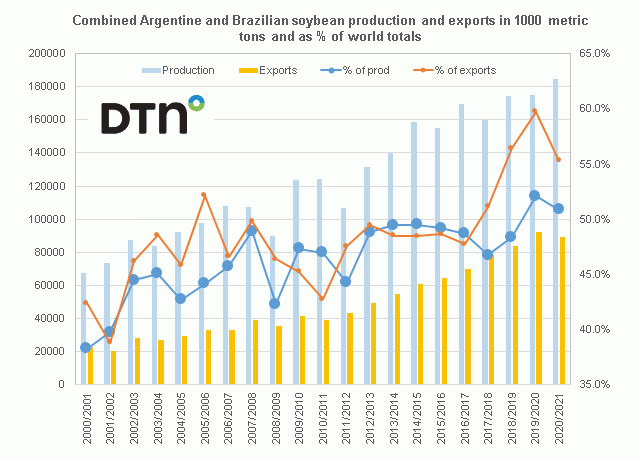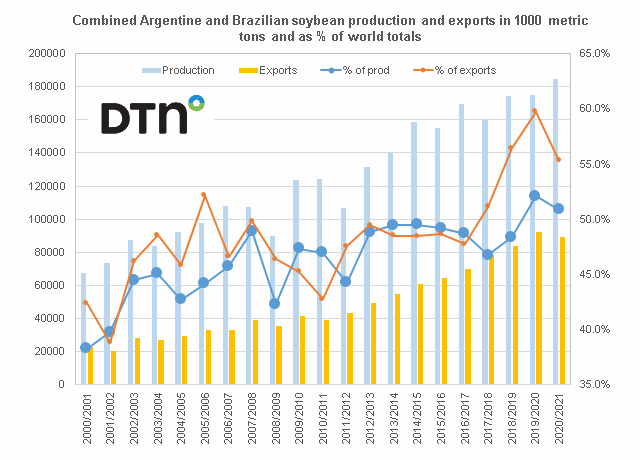Fundamentally Speaking
Improved Kansas, Nebraska Drought Ratings
With all the concern about well above average precipitation in much of the Corn Belt over the past six weeks delaying timely seeding of the nation's row crops, one positive for both the national U.S. corn and soybean yield is the much better shape moisture-wise the states of Kansas and Nebraska are in.
In recent years, both have had well below trend yields of corn and beans due to long standing drought issues, much of which have been removed this year.
Though western KS is still very dry, the eastern part of state where the bulk of the row corps are grown are doing far better.
P[L1] D[0x0] M[300x250] OOP[F] ADUNIT[] T[]
Interesting to see that the Wheat Quality Council's annual winter wheat tour estimated an average yield for Kansas of 46.5 bushels per acre (bpa) compared to the recent five-year average of 42.4 bpa and production of 290.4 million bushels (mb) while the USDA has the Kansas yield projected at 38 bpa with production of 267.9 mb.
Along these lines, this chart shows the end of April Palmer Drought Severity Index readings (PDSI) for both states on the left-hand axis while reported on the right-hand axis is the mid-May percent of each date in D1-D4 drought as reported by the weekly U.S. Drought Monitor site.
The figures in orange rectangles indicate the mid-May KS winter wheat rating while the figures in the blue rectangles are the mid-May NE winter wheat ratings using our usual ratings system (where we weight the crop based on the percent in each category and assign that category a factor of 2 for very poor, 4 for poor, 6 for fair, 8 for good, and 10 for excellent and then sum the results).
As noted, portions of Kansas, especially in western sections where the bulk of hard red wheat is grown, are still in a drought.
The state as a whole had end of April had a PDSI reading of -2.58 which, though better than last year's -3.52 (the worst at least since 2000), stills shows much of state having severe to extreme drought with 49% in D1-D4 drought as of last week, though lowest mid-May percent since 2021.
The winter wheat rating this week is 588, the best in three years though down from the 10-year average of 604.
The state of Nebraska is doing far better as the end of April PDSI reading of -1.12 was the lowest in three years with just 9.3% in D1-D4 drought as of last week, the lowest mid-May percent since 2020.
USDA reported Nebraska wheat conditions at an impressive 766 rating, well above 10-year average of 676 and highest NE rating for this time of year since 2009.
(c) Copyright 2024 DTN, LLC. All rights reserved.






Comments
To comment, please Log In or Join our Community .